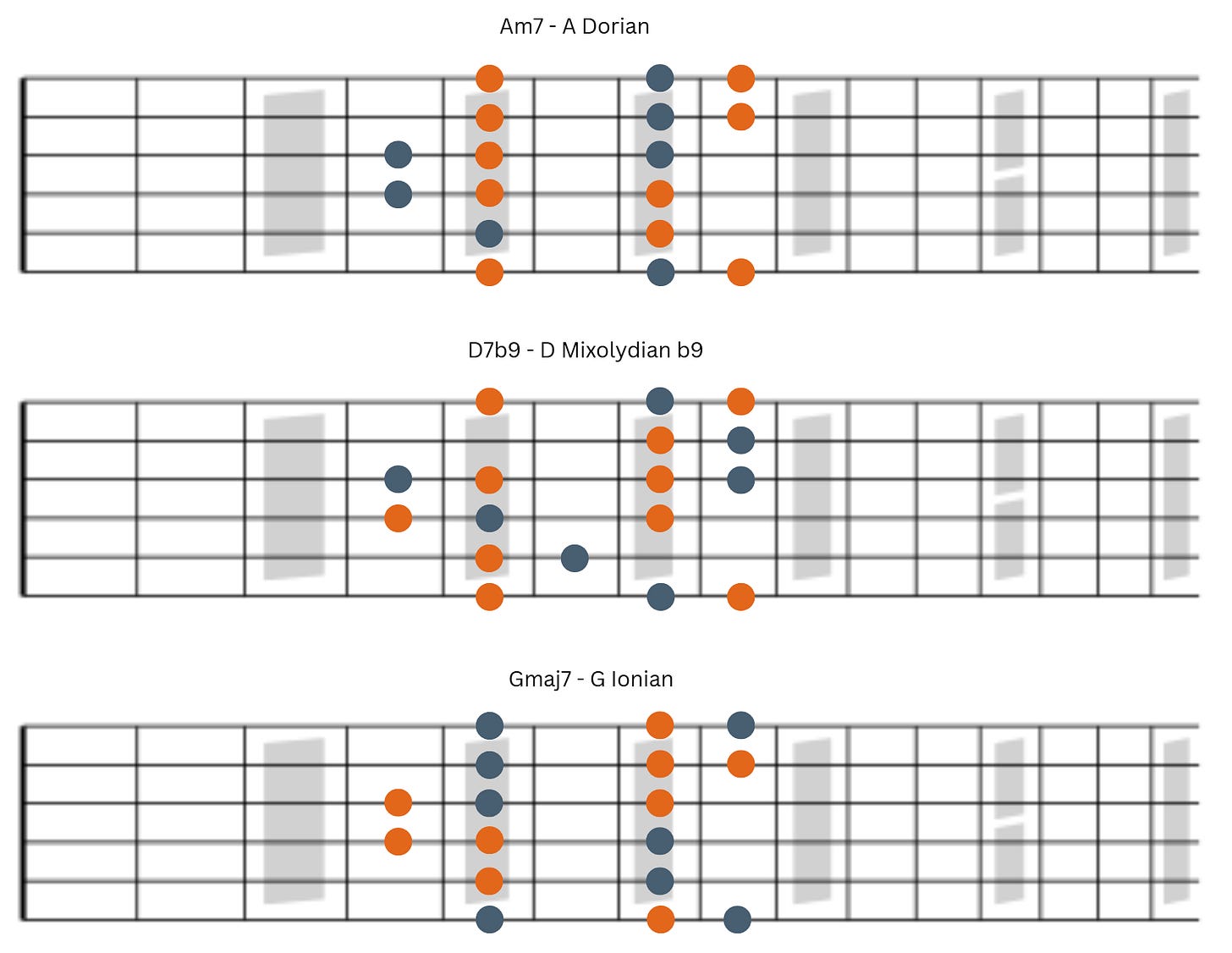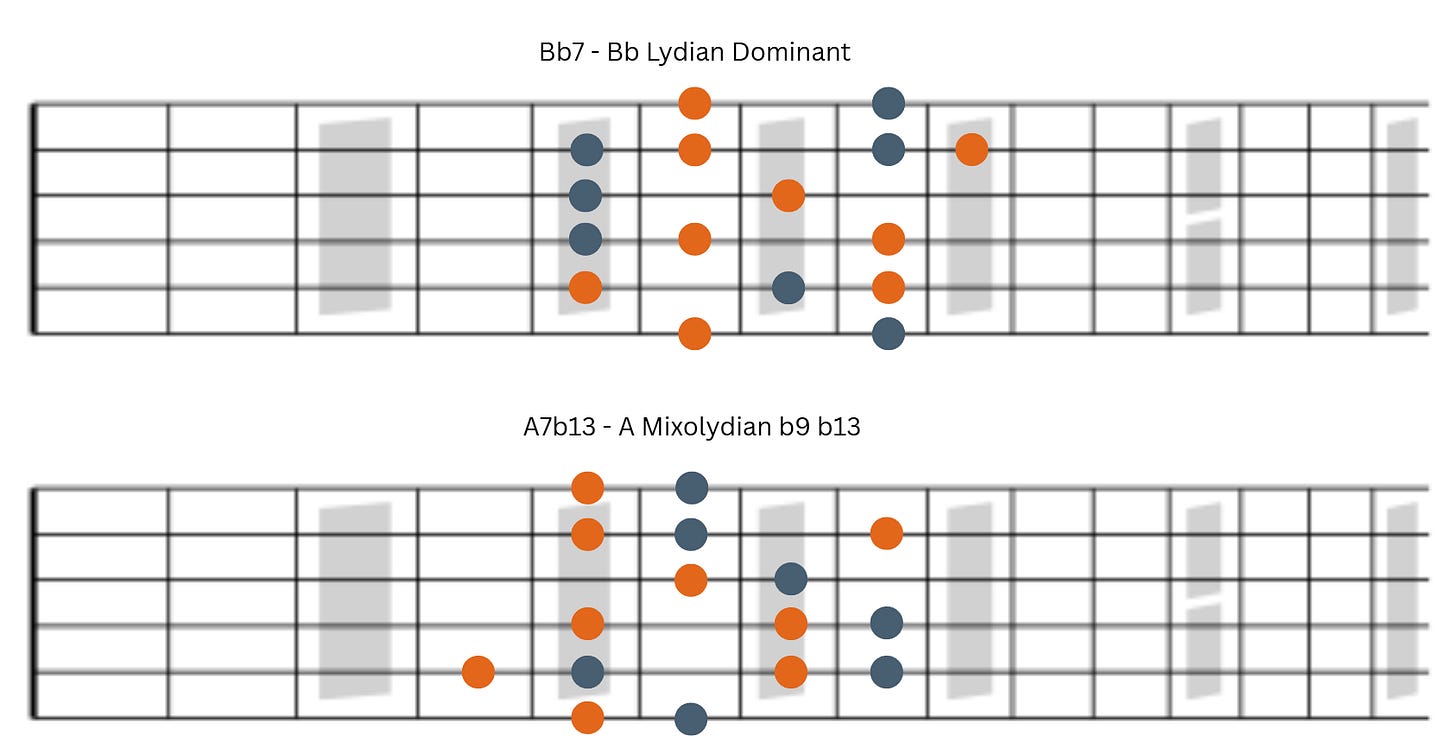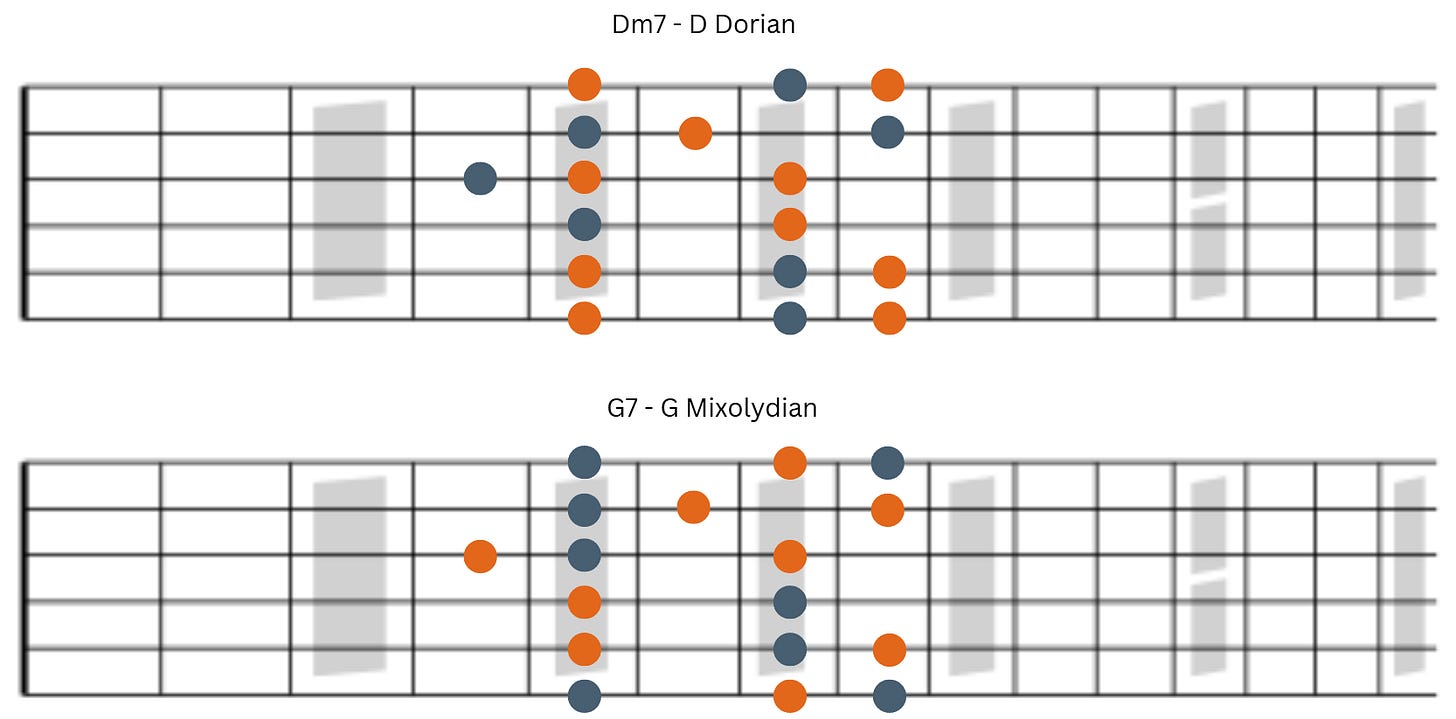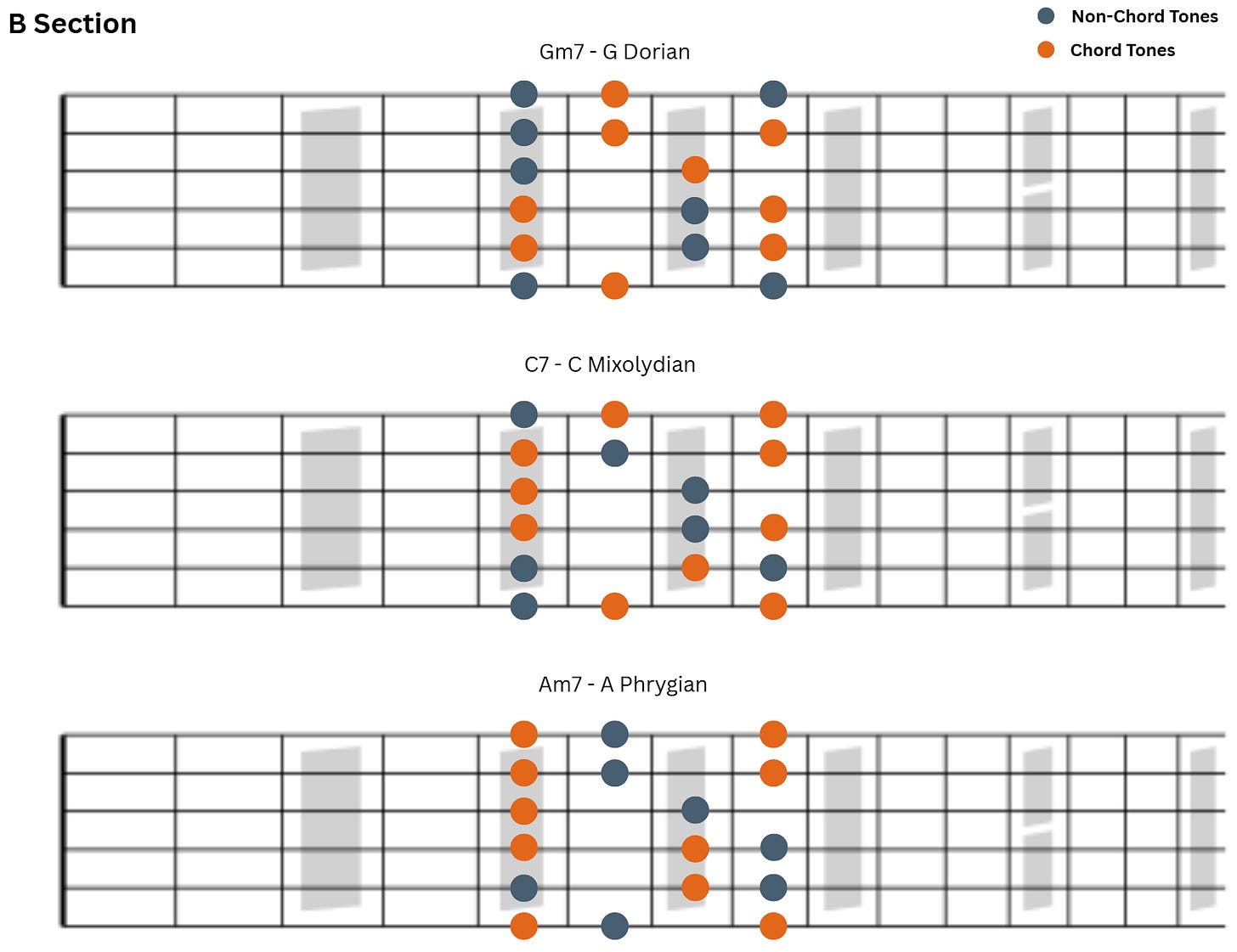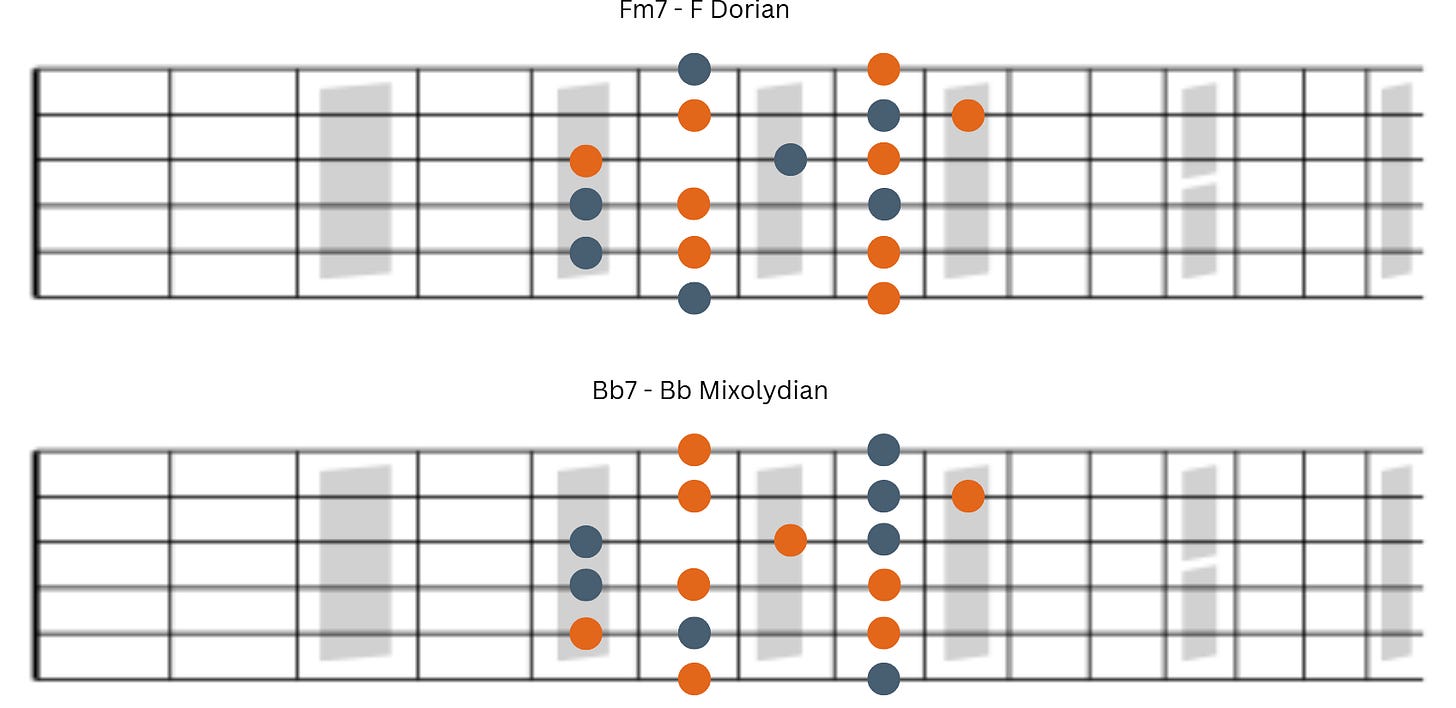Wave Chord Scale Study
Note Collections for Improvisation
Here’s our tonic major chord and associated scale.
Now we move to Bbdim7. We can relate this to and Em7b5-A7b9. We’ll pull from a mode of the D harmonic major scale. We’ll conceive of this as an A7/Bb.
Now we have a ii-V-I in the key of the IV chord, G major. The D7 will include a b9, so again we’ll work with harmonic major.
Now we have the minor iv chord, Gm6. We’ll work with G melodic minor.
Next the iii chord will have a few different chord qualities and associated scales before the V/II.
Here we have the V/II. Our parent scale is E harmonic Minor. This mode is commonly known as Phrygian Dominant.
Now we’ll work with two predominant chords; E7 and Bb7. In both cases we’ll use the melodic minor scale. These modes are known as lydian dominant.
Then our dominant chord arrives; A7b9. Here we’ll work with the parallel minor, using phrygian dominant.
Now will have Dm7-G7 a ii-V in C.
We’ve reached the B section. We have a ii-V-I in F to start with. Although, the one we’ll play as a iii chord or alternatively, Fmaj7/A.
Then on to the same progression in Eb.
Now we have the V chord which will point us back to the A Section.
Thanks for reading and studying the patterns. Please remember to subscribe.



